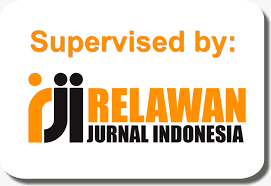The The Correlation between Vocabulary Learning Strategies and Reading Comprehension
DOI:
https://doi.org/10.52333/djoee.v5i1.488Keywords:
correlation, vocabulary learning strategies, reading comprehensionAbstract
This study aimed to find out the correlation between vocabulary learning strategies and reading comprehension and to determine the extent to which vocabulary learning strategies contributed to the reading comprehension of students. This study used a correlational research design. The sample was selected by using a purposive sample technique, consisting of 68 students. The result of the study showed that the level of students’ vocabulary learning strategies questionnaire and reading comprehension test was in the average category. The data obtained were analyzed by using Pearson Product Moment and Regression Analysis. Pearson Product Moment was aimed to find out the correlation between vocabulary learning strategies and reading comprehension and Regression Analysis was used to determine the extent to which vocabulary learning strategies contributed to the reading comprehension of students. Based on the result of data analysis, it was revealed that there was a significant correlation between vocabulary learning strategies and reading comprehension of the eleventh-grade students of SMA Islam Az-Zahrah Palembang since the p-value (0.003) was lower than the alpha value 0.05. The r-value (0.358) was higher than the r-table (0.2012). It showed that there was a low correlation between vocabulary learning strategies and reading comprehension of the eleventh-grade students of SMA Islam Az-Zahrah Palembang. Moreover, vocabulary learning strategy contributed as much as 12.8%. It could be concluded that the contribution was in the deficient category.
References
Anderson, H., & Charles. (2007). The Nature of Silent Reading. Boston: Pearson Education.
Ahour, T., & Salamzadeh, P., (2014). Vocabulary Learning Strategies Used by Poor Iranian High School Students. International Journal of Language Teaching and Research, 2(1), 12-15.
Bennet, (2006). Vocabulary Learning Strategies Questionnaire. European Journal of Social Sciences, 23 (4).
Cameron, L. (2001). Teaching Languages to Young Learners. Cambridge: Cambridge University Press.
Cohen, A. D., & Wang, I. K. (2018). Fluctuation in the functions of language learner strategies. System, 74, 169–182. https://doi.org/10.1016/j.System.2018.03.011
Cook, V. (2013). Second Language Learning and Language Teaching (4th Ed.). Routledge.
Creswell. (2012). How to Teach English. Edinburgh: Longman. inc.
Creswell, J. W. (2012). Educational Research: Planning, Conducting, and Evaluating Quantitative and Qualitative Research (4th ed). USA: Pearson Education Inc.
Douglas. (2016). Global Learning and the School Curriculum. A Pedagogy for Global Social Justice. Abingdon: Routledge.
Duke. (2003). Reading and Writing Information Text in the Primary Grades. Research Based Practices. New York: Scholastic Teaching Resources.
Gardner, D., & Nation, B. (2013). Exploring Vocabulary: Language in Action. Routledge.
Grabe, W., & Stoller, F. (2018). Teaching Vocabulary for Reading Success. The TESOL Encyclopedia of English Language Teaching, First Edition.
Gu, Y. (2003). Vocabulary Learning in a Second Language: Person, Task, Context and Strategies. TESL-EJ,7(2). Retrieved from http://www.tesl- ej.org/wordpress/issues/volume7/ej26/ej26a4/.
Haq. (2014). Cretaeous Eustasy Revisited. Global Planetary Change, 113.44-58.
Hulstijn, J. & Laufer, B. (2001). Some Empirical Evidence for the Involvement Load Hypothesis in Vocabulary Acquisition. Language Learning 51/3:539-58.
Kayi-Aydar, H. (2018). Scaffolding Vocabulary Development. The TESOL Encyclopedia of English Language Teaching, 21(4).
Nation, I. S. P. (2001). Learning Vocabulary in Another Language (2nd ed.). Cambridge: University Press.
Prashneel. (2019). Vocabulary Learning Strategies; Employed by Learners of English as a Foreign Language (EFL. English Language Teaching) 12(5), 177-189. Fiji National University.
RAND (2002). Reading for Understanding, toward Program in Reading Comprehension. Santa Monica, CA: RAND, DOI: 10.4236/ce.2015.622246.
Ria, N., & Perdawati, N. (2021). The Correlation between Vocabulary Mastery And Reading Comprehension Of The Eleventh Grade Students Of SMA Negeri 1 Indralaya. Didascein: Journal of English Education, 2(2), 109-115.
Richards J. C. (2009). Longman Dictionary of Language Teaching and Applied Linguistic (3rd ed). Toronto: Longman Pearson Education Limited.
Richard & Schmitt (2012). Longman Dictionary of Language Teaching and Applied Linguistic (4th ed). Harlow: Longman.
Saigh, K., & Schmitt, N. (2012). Difficulties with Vocabulary Word Form: The Case of Arabic ESL Learners System, 40(1), 24–36. https://doi.org/10.1016/j.system.2012.01.005
Schmitt, N. (2008). Review Article: Instructed Second Language Vocabulary Learning. Language Teaching Research. (pp. 329-363).
Schmitt, N. (2010). Key Issues in Teaching and Learning Vocabulary. Insights into Non-native Vocabulary Teaching and Learning, 28–40.
Sismiati. (2012). Create a Reading Comprehension. Longman-Inc.
Soedjito. (2009). The Vocabulary of English. Jakarta: Gramedia Pustaka Utama.
SoSHEC (2017). Vocabulary Learning Strategies and Reading Comprehension. Https://doi.org/10.2991/ soshec-17.2018.40.
Tavakoli (2014). The nature of Silent Reading. Boston: Pearson Education.
Thornbury. (2002). Toward a Model of Motivated Vocabulary Learning: A Structural Equation Modelling Approach. Language Learning.
Tseng, W. T., & Schmitt, N. (2008). Toward a Model of Motivated Vocabulary Learning: A Structural Equation Modeling Approach. Language Learning, 58(2), 357–400.
Zimmerman, C.B. (2009). Word Knowledge: A Vocabulary Teacher’s Handbook. New York: Oxford University Press.
Downloads
Published
How to Cite
Issue
Section
License
Copyright (c) 2024 Aan Julistri, Gaya Tridinanti, Jenny Elvinna Manurung

This work is licensed under a Creative Commons Attribution-NonCommercial-ShareAlike 4.0 International License.







